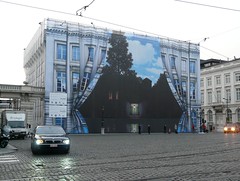Surrealism[1] is a cultural movement that began in the early-1920s, and is best known for the visual artworks and writings of the group members, says Wikipedia.
Surrealist works feature the element of
surprise,
unexpected juxtapositions and
non sequitur;
however many Surrealist artists and writers regard their work as an expression of the philosophical movement first and foremost, with the works being an artifact.
Leader André Breton was explicit in his assertion that Surrealism was above all a revolutionary movement.
Surrealism developed out of the Dada activities of World War I and the most important center of the movement was Paris. From the 1920s on, the movement spread around the globe, eventually affecting the visual arts, literature, film, and music, of many countries and languages, as well as political thought and practice, and philosophy and social theory.
Freud's work with free association, dream analysis and the hidden unconscious was of the utmost importance to the Surrealists in developing methods to liberate imagination. However, they embraced idiosyncrasy, while rejecting the idea of an underlying madness or darkness of the mind. (Later the idiosyncratic Salvador Dalí explained it as: "There is only one difference between a madman and me. I am not mad."[4])
The group aimed to revolutionize human experience, including its personal, cultural, social, and political aspects, by freeing people from what they saw as false rationality, and restrictive customs and structures.
Wednesday, November 5, 2008
Subscribe to:
Post Comments (Atom)





No comments:
Post a Comment